[La deuxième partie] Going au naturel with young bubbles: Exploring the softer side of premature bottling and live beer – bubbs without a secondary fermentation
My niece was born in November 2021 and to wet the baby’s head, the husband and I popped the cork on a 2014 Extra-Lees-Aged Sparkling Cider.
I became an aunt again in January 2023, when my second niece joined humanity on this piece of rock hurling around space. This time, we opened a 2015 Oak Barrell Aged Blanc de Noir Sparkling Wine.
Granted, my sister did all the hard work, and I just get to corrupt/spoil/love her offspring, but no one can say we didn’t welcome the two the family way – poppin’ corks!
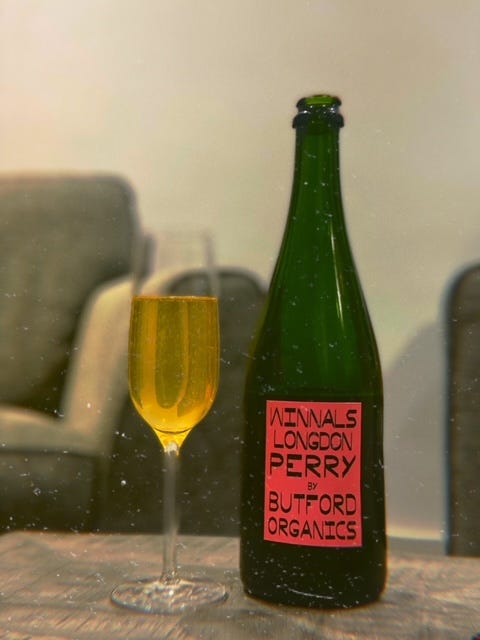
Why the fizz? Because we don’t drink enough Bubbles! A glass flute, filled with a golden liquid, bursting with delicately disappearing yet resilient bubbles – this truly highlights the fragility of life and how moments should be celebrated. And they taste damn good too!
As mentioned in M is for Méthode Traditionnelle, not all Fizz is created equal – some sparklers may be the result of forced carbonation. Here, the fermented liquid is injected with CO2. Imagine a glass of sparkling water – got it? Ok. Now look at the bubbles: yup, they are bigger and given time, the water goes flat, i.e. the bubbles leave the liquid. Same thing happens to Cola or other carbonated soft drinks when they have been open for a while.
Adding carbonation to an already fermented liquid is fairly simple – inject gas, seal, job done. This method will create a fairly consistent carbonation across various batches. If you order a pint of cider in the pub, this is typically force carbonated. Commercial European lager, for example, is equally force carbonated. The resulting fizz is uniform, and reliable. Sometimes carbonation is added when the drinks are poured, so gas is injected at point of sale. This can be less reliable, especially if the person operating the machine doesn’t know how much CO2 is needed.
I sampled a fantastic mixed fermentation beer while visiting the weekly market in Murat-Le-Quaire in the in Auvergne last year. The ale, however, was heavily over carbonated – the machine was to blame (according to my limited French and the wild gesturing of the person in charge of it). Some enraged French gestures and words later, the assistant brewer turned up and offered to show us around the brewery and sample the beers how they should be. We agreed to meet up a few days later. Some extensive liquid research later, I discovered that the house style of the brewery was indeed a gentle bottle conditioned beer, with the softest non-scratchy bubbles.
What I held in my hand that Wednesday morning at the market was everything but soft: it was harsh, fierce and almost flavourless, yet with a rather billowing head. The carbonation cut across my throat and carried all aromas and flavours off before I could even attempt to enjoy them.
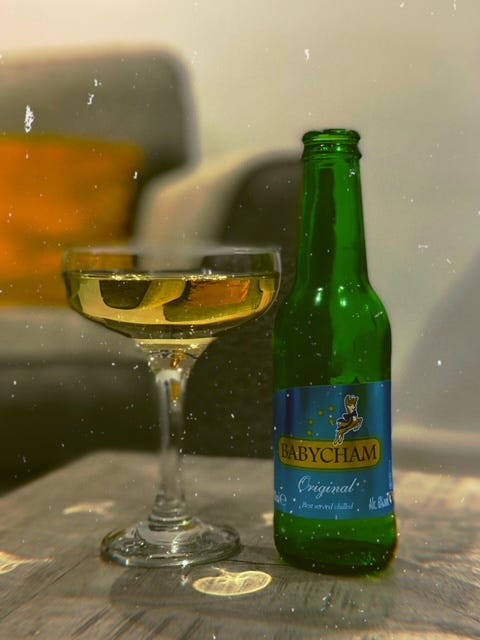
Moral of the story – don’t dismiss a drink based on the level of carbonation. Some liquids benefit from that extra sparkle, while others require a softer approach. If in doubt, ask the people behind the liquid!
If cask ales are your thing, you will be familiar with the soft bubbles inside the liquid. There is nothing more special than drinking a Pale Ale in the beer garden of your choice, or a Mild by the pub fire.
CAMRA, calls those pints “real[i]”, more specifically “real ale” and “real cider”: the liquids inside the casks are live, and when they arrive at the pub need to rest for a little while, i.e. cellar conditioning, to ensure the drinks are at their best when drunk by punters. Before we upt sticks and moved away in 2020, the husband and I would often visit a pub in the next village for its superb selection of cask ales, only to find that specific the golden ale we wanted, was conditioning in the cellar…
The point here is, the liquid is still fermenting and the bubbles are the result of the yeast munching away on the sugars! Go little buddies! We’ll raise a glass upon your death! (this turned quickly…. let’s move away from the morbid thoughts…)
The beer arrives in the glass carbonated, but, without the injection of extra carbon dioxide gas. “Live” or “real” cider can equally be naturally carbonated, with CAMRA stating that “[…] best practice encourages and promotes cider and perry which is full fermented to dry or where natural carbonation is created by process […]” [ii] Process-driven carbonation is the key here. If the liquid retains its bubbles due to processes involved, then it is considered “real” by CAMRA.
Consequently, cask-conditioned ales are evolving and naturally sparkling, albeit the bubbles are milder and calmer than when injected with bubbles by force. Worth noting here is, that there isn’t a cask-conditioned cider or perry as such: cider is not beer and isn’t made like it either. Cider is a fruit wine and its sugars are simple sugars, which given the right conditions will be consumed wholly by the yeast, the result being a dry cider. Cask-conditioned beer is the result of yeast chomping through wort which contains both simple and more complex sugars, resulting in a slower and somewhat more complex fermentation. Cask ale continues to ferment and therefore produce those lovely cask-conditioned bubbles. Cider, and perry, can be served from cask, but can’t really be compared to cask ale, because it is cider and not ale. Ale is ale. Cider is cider. Perry is perry.
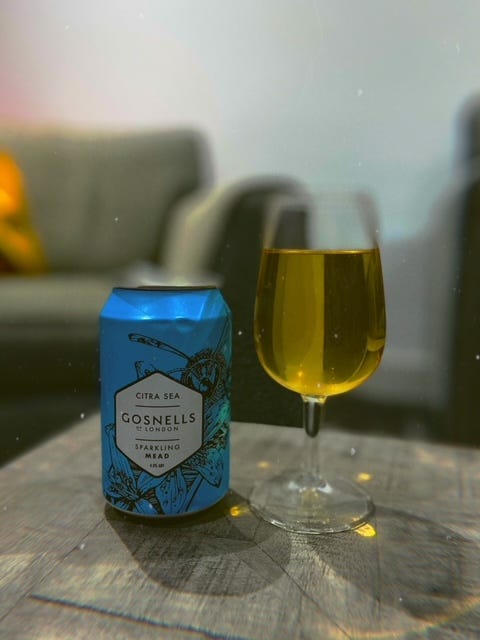
On that note, do you know what the first alcoholic (and indeed sparkling) beverage was to be advertised on TV screens across England?[iii] Babycham. Yup, the “genuine Champagne perry” from Shepton Mallet, Somerset, made its televised debut in 1953.
And yes, you read that right: genuine C-h-a-m-p-a-g-n-e perry. As much as you don’t want to start a conversation with a German about the benefits of the trusted socks-in-sandals combo, or tell a dad how to mow a lawn, you don’t want to encroach on the French and their winemaking!
In 1974, H.P. Bulmer Limited and Showerings Limited (the producers of Babycham), where taken to court by no other than two of the big Champagne houses in France: J. Bollinger S.A. and Champagne Lanson Père et Fils. The latter suing on behalf of themselves and everyone who made Champagne in the Champagne region and sold it England and Wales. The case is known as HP Bulmer Ltd v Bollinger SA (1974) if you want to read up on that.
Angry much?! But with good reason. 14 years prior to that incident, the Spanish had exasperated the French winemakers, in a case that is known as Bollinger J v Costa Brava Wine Coy Ltd (1960). Here, a sparkling wine product labelled ‘Spanish Champagne’ caused uproar. The French producers argued that Champagne stood for quality wine from the Champagne region, and ultimately won the case, as the naming could indeed confuse consumers. All together now please: “All Champagne is sparkling wine, but not all sparkling wine is Champagne.”
And the in the case of Champagne Cider and Champagne Perry? Here, the cidermakers argued that they had been using the descriptive name for eons to label sparkling cider and perry, which they had. Stating that the French makers had no qualms about it up to that point in time.
One of the offending ciders? Bulmer’s Cidre de Luxe (1906), later renamed to Pomagne (1916).
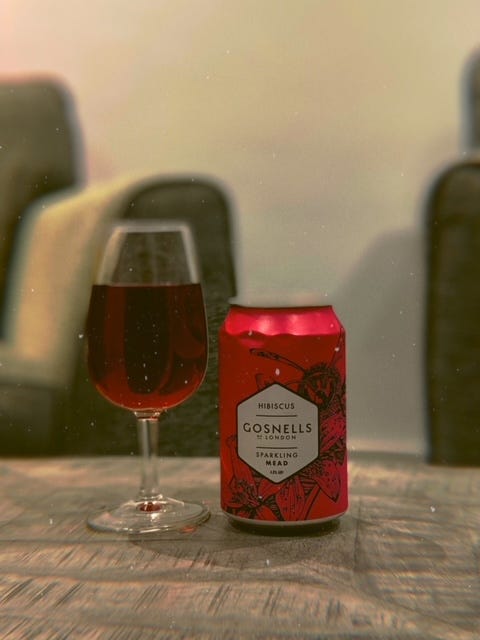
Again, the French makers counterargued that it was confusing to the consumer and products should not be labelled as such.
The result: well, the English cidermakers won – it was ruled that it was unlikely that drinkers would confuse fermented sparkling grape juice with fermented sparkling apple and pear juice.
However, soon after said sparkling affair, in 1975, the English cidermakers changed how they made their Pomagne and switched from Méthode Champenoise (bottle fermentation) to using the Charmat Method and fermenting Pomagne in large tanks.
Babycham – the genuine Champagne Perry, has also dropped the title and is now marketed as The Happiest Drink In The World, and since 2021 back in Shepton Mallet, Somerset.
Guess, in the end, everybody is happy.
Back to the softer side of premature bottling:
In Pétillant Naturel, or Pét Nat, ciders and wines, the carbonation can also feel softer and less mechanical. However, bottle fermented, Méthode Ancestral, Méthode Rural, or, if Italian, col fondo (fundamentally a pét-nat Prosecco), drinks are also unpredictable (this also applies to bubbles produced via the tank or traditional method to be honest so no sweat here)
One day you open your favourite Pét Nat White and it pours with the greatest of delicate efference – it is heaven. The next time, you pop a bottle, the carbonation is stronger and it appears less sweet. Unpredictable, as the yeast is in charge of the bubbles, not the cider- or wine-maker. And try and talk to yeast cells – man, it is difficult!
Back when we first discovered fermentation, we likely ended up with still booze. That is, until some great spark thought about closing the fermentation vessel off, thereby trapping the CO2 inside the liquid.
Think of Pét Nat as the common ancestor to all sparkling wines and ciders. Like the Nokia 3210 to the iPhone 14 Pro Max, but less techy and more delicious. In a nutshell, a bottle of cider destined to become a sparkling cider starts off as a bottle-fermenting (i.e. Méthode Ancestral) or a bottle-conditioned cider (i.e. Méthode Traditionnelle), with the latter requiring a secondary fermentation process (think disgorgement and dosage here).
Pét Nat is often also used synonymous with the term natural as in natural wine- and cider-making, specifically spontaneous fermentation, native yeasts and minimal intervention. Often Pét Nat bottles can also be slightly cloudy, so don’t expect crystal clear liquids. It’s all part of the charm, aroma and indeed flavour of the liquid.
Some producers may print Méthode Ancestrale on the label, to avoid being painted with the same brush as natural wine. This term is typically understood as less all-encompassing, but there aren’t any rules really, and if you want to follow my advice – grab the bottle if you’re intrigued and try it!
Typically, a Pét Nat bottle will be closed with a crown cap, not a cork and muselet, which is standard with traditional and tank method bubbles. Méthode Ancestral bubbles are less violent, and the pressure inside the bottles is far less then fizz resulting from Méthode Traditionnelle. Essentially, there is less sugar for the yeast to munch on, as bottling cider and wine à la Méthode Ancestral forgoes dosage, which means less production of carbon dioxide and alcohol.
Armchair travellers rejoice, as opening a bottle of Pét Nat or Méthode Ancestrale cider or wine, will present you with a snapshot in time and place of the environment it was grown, harvested, fermented and bottled in. You are taken to the exact time of the bottle’s conception, including the time of day it started life. Yes, this is true for all cider- and wine-making, I get it. I’m just a sucker for the romantic notion of the wild, ancestral bubbles. Yes, vintages differ. Yes, terroir matters. Yes, the hand of the producers is key, but when said producer hands over the reins to those little sugar-loving suicide machines, the results are beautifully wild and true to life – Pétillant Naturelle is naturally sparkling perfection.
Writing this down has triggered me somewhat though: what’s in a name really?
Think of Champagne, and frivolousness, sex appeal and grown-up luxury might spring to mind. Prosecco? Careless young fun, cabriolets, headscarves and big white-framed sunglasses. Cava? Sunshine, ice buckets, yachts and boating shoes. Sekt? German efficiency, silver BMW’s and finance talk.
Jokes aside… (do Germans joke?!) we, well, I (shouldn’t generalise) think of certain connotations when I think of a drink, and indeed choose the bottles I want to try.
Sparkling cider? Homelessness, park benches, farmers, muddy wellies and somewhat unkempt, dishevelled male-dominated appearances… I think I can smell hand rolled cigarettes and hear a tractor in the background.
I’m not one for gendering drinking culture and drinks (there is no such thing as a girly beer, right?!), but one sparkling perrry’s success is down to exactly this: gender.
Babycham was directly marketed at women when they started advertising. From the late 50s onwards, slogans like “Babycham sparkles just the way I want to feel, “Babycham is the happiest drink in the world” and “Babycham makes every day a celebration” were printed next to glamourous smiling women, dressed to impress, others and themselves. They seem innocent but also sexually available. And they were sure of themselves – after all, the Second World Was had ended, and austerity, rationing and darkness were ready to be left behind.
This is certainly not the place and post to dig deeper into the connections gender, image and implied social and historical interactions presented here, but it is worth noting that a conscious decision was made: let’s market this drink to the fairer sex and it worked – Babcham became a household name. Roll on the 90s, and the once sought-after genuine champagne perry with the cute deer, was competing with equally as fun, young and colourful alcoholic drinks, slowly blending into the backdrop of cheap and cheerful imbibing. One could even argue that Babycham set the wheels in motion for a decade of fluorescent bright coloured Alco-Pops, but one is not going there – today, at least.
Nowadays, Babycham is no longer sending out confusing signals: it has lost the female dominated sensual and somewhat sexual, allure, but kept the playful innocent baby deer. Society’s love for anything retro and nostalgic allowed the sparkling perry a resurgence – although far more niche then it ought to be.
Cider and perry may still have an image problem, I give you that. But I’m over it – and it’s time the world is over it too!
Bubbles, whether in wine, mead, perry or cider are sophistication, enjoyment and indulgence, and we ought to celebrate life more often! Sober or sober-curious? Step into my office, there are options for you too, from AF wines, to ciders and meads. And no, they are not all a cloying artificial hot mess!
Whatever your preference for bubbles is, there is a bottle serving exactly this: a loud and fun attitude of a Charmat Method, a sexy tingle of a Méthode Champenois, a clean and sophisticated vibe of a klassische Flaschengärung, a funky and wild Méthode Ancestrale, a reliable, familiar hug from a forced carbonation.
Grapes or apples, pears or honey, grains or co-ferments, bubbles are awesome!
Yours, most sincerely
Stay happy
Santé! xxx

[i] Campaign for Real Ale What is live beer? https://camra.org.uk/learn-discover/the-basics/what-is-live-beer/ [Accessed 01/02/2023]
[ii] Campaign for Real Ale, CAMRA’s definition of real cider and perry – revised May 2021 https://camra.org.uk/campaign_resources/camras-definition-of-real-cider-and-perry/ [Accessed 01/02/2023]
[iii] Babycham Did You Know? https://www.babycham.co.uk/ [Accessed 03/02/2023]
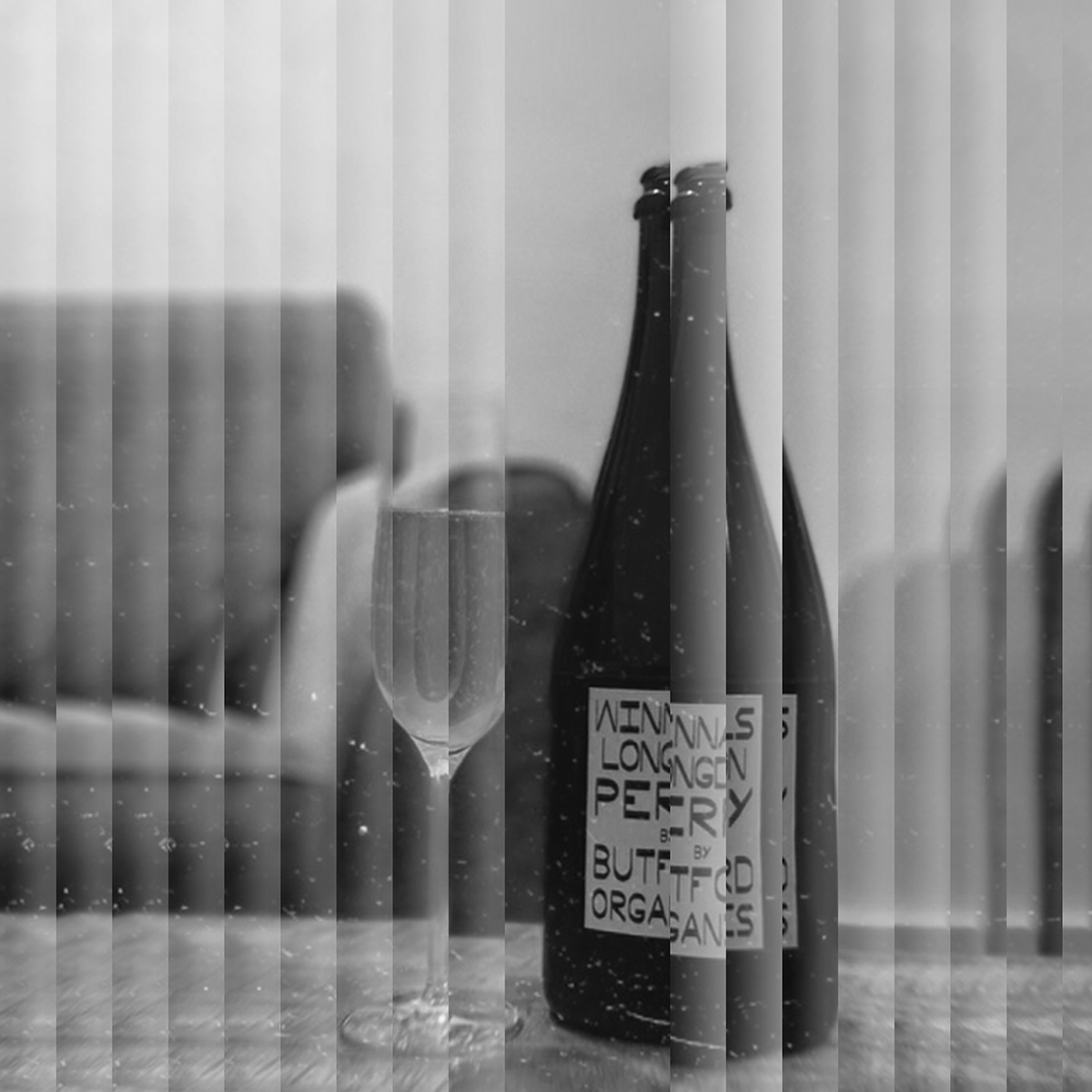
Leave a Reply